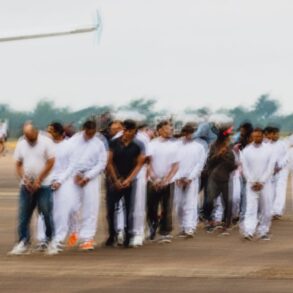Ever since it launched its “special military operation” against Kyiv last year, global publics have wondered just how long Moscow can keep up its war of aggression. The answer, it seems, is quite a while. Despite the enormous costs to date of Russia’s Ukraine campaign on the country’s geopolitical standing, its fiscal health, and the pace of its population, the Kremlin is giving every sign that it is settling in for a protracted war of attrition against its western neighbor.
The indicators are everywhere. In an echo of the Soviet Union’s infamous “gulag archipelago,” the Kremlin has begun erecting a network of prisons within Russia itself and in parts of Ukraine that it controls. These facilities are designed to house the thousands of Ukrainians, both soldiers and civilians, that Russian forces have taken captive to date—and the thousands more that they intend to capture in the months ahead. The scope of this effort is massive. An Associated Press exposé published last month, drawing from official Russian government documents, detailed official plans “to create 25 new prison colonies and six other detention centers” in Ukraine alone by 2026.
At the same time, Russia is waging war on Ukrainian society by targeting the country’s younger generations. According to Russian media reports, around 700,000 children have found “refuge” in Russia. There, these children are subjected to a policy of “Russification” designed to diminish and ultimately remove understanding of, and loyalty to, Ukrainian culture and history. The Kremlin’s conduct, observers said, rises to the level of a grave war crime, given that forced population transfer is included in the 1948 Genocide Convention’s definition of genocide.
The government of Vladimir Putin, meanwhile, is inching ever closer to national mobilization, widening the pool of those who could be thrown into the Ukraine fight in the future. Last month, the Kremlin signed into law a bill raising the age of military reserves that could be called up for service to 65. As a practical matter, this means that pensioners in Russia (where the retirement age is 65) can now be forced to serve in the country’s armed forces. That move mirrors a recent change to the national draft age for Russian men, which has been widened to range from 18 to 30.
These efforts eloquently underscore the limits of Western economic pressure. Russia’s war against Ukraine touched off sanctions from the U.S. and Europe that were intended to be “the most consequential in history.” But these measures haven’t succeeded in halting Moscow’s war against Kyiv. As The Wall Street Journal outlined, the Kremlin has managed to successfully mitigate their most devastating consequences through a range of policies, such as “a significant government stimulus, a shift to a war economy and an unprecedented rerouting of its trade to Asian partners, primarily China and India.”

Roman Chop/Global Images Ukraine via Getty Images
None of that means Western sanctions are a failure. To the contrary, the economic penalties enacted by the United States and Europe have “cut access to high-tech inputs, including for the military, and erode[d] Russia’s potential growth,” Elina Ribakova of the Peterson Institute for International Economics outlined. They also “will deepen the preexisting fault lines in Russia’s outlook of chronic underinvestment, poor productivity growth, and labor shortages.” What they haven’t managed to do yet, however, is alter the Kremlin’s strategic calculus in its war against Ukraine.
This is so for good reason. The Kremlin can clearly see that America’s public discourse over Ukraine is increasingly polarized, with more and more Republicans advocating a paring back of support for Kyiv (albeit for different reasons). That, coupled with President Joe Biden‘s decidedly lackluster approval rating, has led officials in Moscow to hope that U.S. policy will trend in a direction more favorable to them in the not-so-distant future. If that occurs, Western sanctions are likely to decline in both scope and intensity—providing Russia the precious time it needs to erode Ukraine’s defenses.
That shouldn’t be allowed to happen. The Biden administration repeatedly said that the United States is prepared to back Ukraine for “as long as it takes” for Kyiv to successfully beat back Russian aggression. Unless the West is prepared to step up its pressure on Moscow even further, Ukraine will still need to survive until Western sanctions have time to bite.
A much better strategy, both for Kyiv and for us, would be for the U.S. and its international partners to help Ukraine win quickly and decisively, before Russia’s war of attrition truly settles in.
Ilan Berman is senior vice president of the American Foreign Policy Council in Washington, D.C.
The views expressed in this article are the writer’s own.
This post was originally published on this site be sure to check out more of their content.






